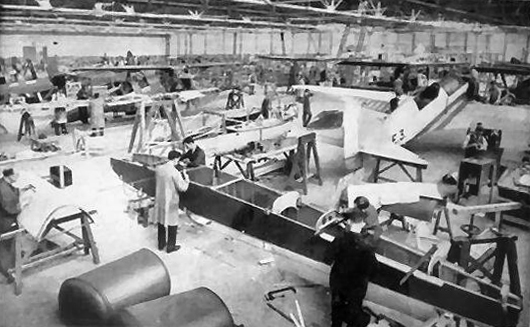

 The prototype, later to become G-ACSP
|
|
In 1933 the Australian millionaire MacPherson Robertson made available a prize of £ 15.000 for an air race from London to Melbourne. The directors of the de Havilland company wanted to be the winner of this race to be British and proposed to build a aircraft for the race and sell them at £ 5.000 each provided the order for the plane would be placed by February 1934. Three aircraft were ordered from the drawing board and construction began at high speed. The aircraft would have to have a cruising speed in excess of 180mph and a range of more than 2.800 miles. To achieve this de Havilland designed an aircraft with a thin wing and a retractable undercarriage. For greater reliability, two engines were fitted. The design was very clean and beautifully streamlined. The aircraft was built entirely from wood, becoming de Havillands first wooden wonder. The construction of the aircraft was carried out in great secrecy, even the future owners were not allowed to see the planes before they were finished. The first Comet, G-ACSP flew for the first time on 8 September 1934, just 6 weeks before the start of the race. The prototype was marked "E-1" and flew with a stylized Comet logo on the nose before receiving its final paint. Below is also a picture of a prototype marked as E-3. The three Comets started for Melbourne on 20 October 1934. In 1935 2 more Comets were built, making a
total of five aircraft. |
|
PROTOTYPE
|
|
|

|
|
|
  |
|
PRODUCTION |
   |
|
THE RACE |
    |
Last updated: 12/01/2019